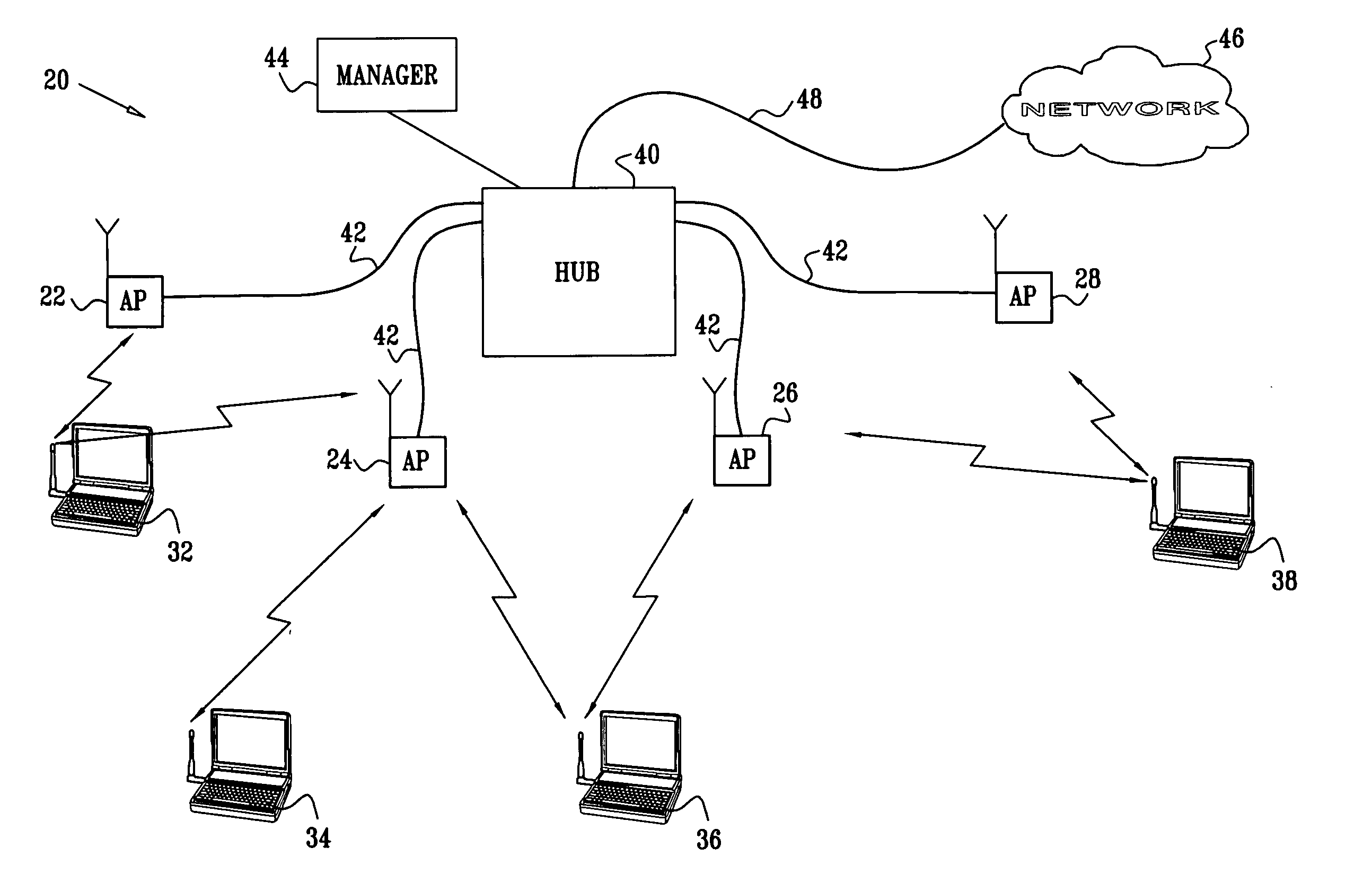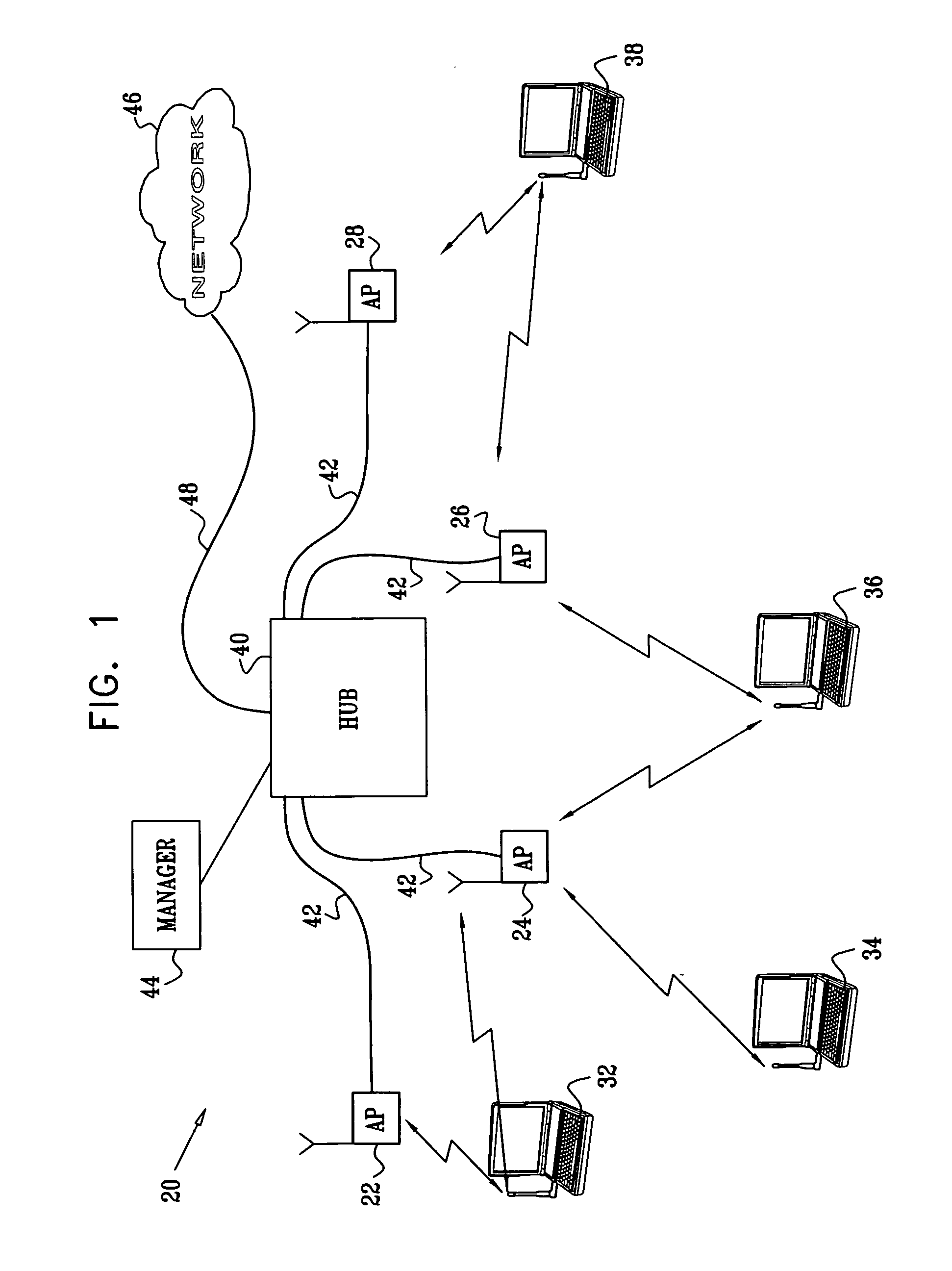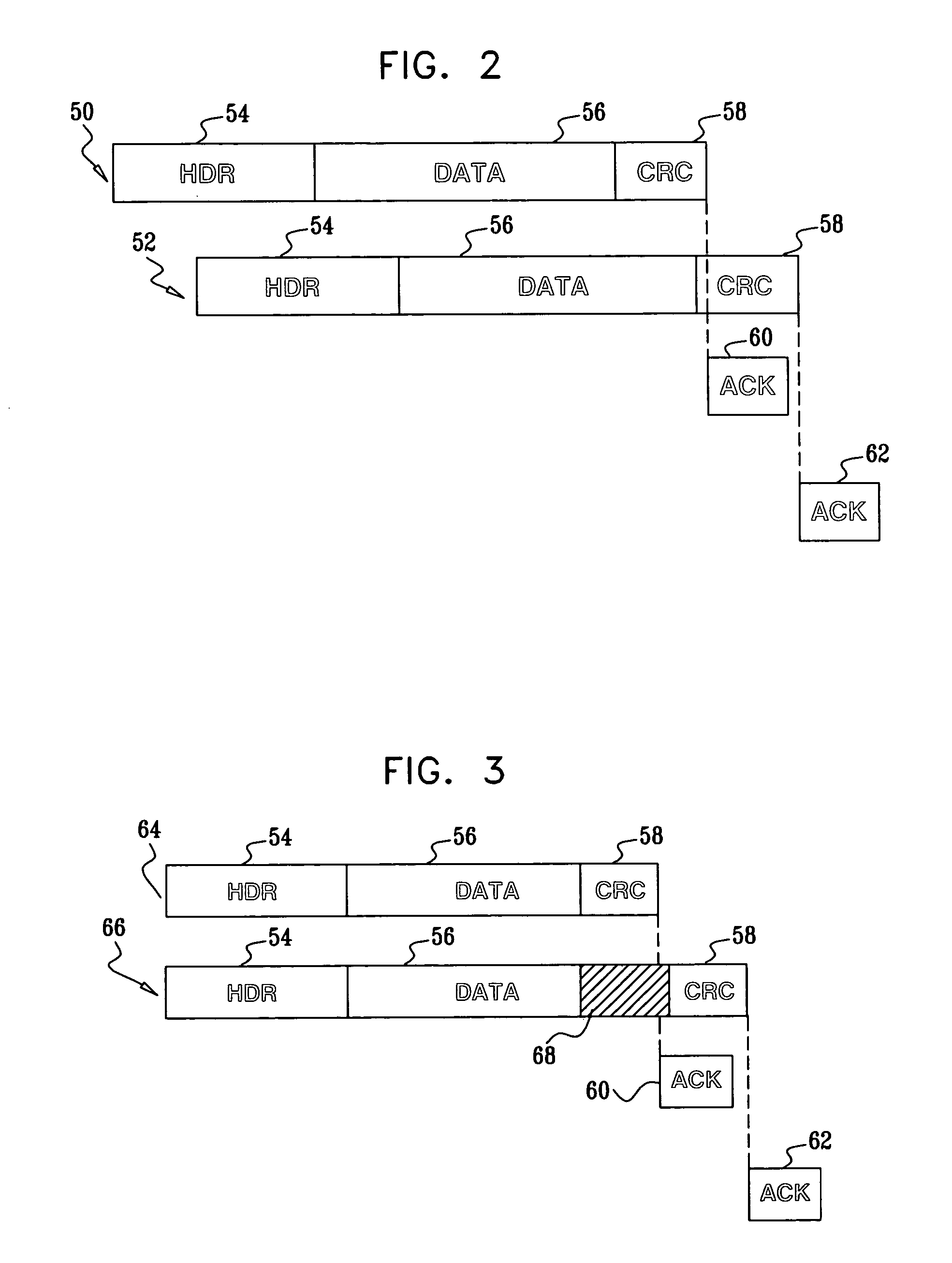Spatial reuse of frequency channels in a WLAN
a frequency channel and spatial reuse technology, applied in the field of wireless communications, can solve the problems of inability to decode ack messages and determine, and achieve the effect of enhancing the transmission capacity of the wlan and reducing latency and jitter
- Summary
- Abstract
- Description
- Claims
- Application Information
AI Technical Summary
Benefits of technology
Problems solved by technology
Method used
Image
Examples
Embodiment Construction
[0033]FIG. 1 is a block diagram that schematically illustrates a wireless LAN (WLAN) system 20, in accordance with a preferred embodiment of the present invention. System 20 comprises multiple access points 22, 24, 26, 28, which comprise PHY and MAC interfaces for data communication with mobile stations 32, 34, 36, 38. The mobile stations typically comprise computing devices, such as desktop, portable or handheld devices. In the exemplary embodiments described hereinbelow, it is assumed that the access points and mobile stations communicate with one another in accordance with one of the standards in the IEEE 802.11 family and observe the 802.11 MAC layer conventions described in the above-mentioned 802.11 standard. The principles of the present invention, however, may also be applied, mutatis mutandis, in other wireless environments, such as Bluetooth networks, personal area networks (IEEE 802.15), wireless metropolitan area networks (IEEE 802.16) and Ultra Wideband (UWB) networks. ...
PUM
 Login to View More
Login to View More Abstract
Description
Claims
Application Information
 Login to View More
Login to View More - R&D
- Intellectual Property
- Life Sciences
- Materials
- Tech Scout
- Unparalleled Data Quality
- Higher Quality Content
- 60% Fewer Hallucinations
Browse by: Latest US Patents, China's latest patents, Technical Efficacy Thesaurus, Application Domain, Technology Topic, Popular Technical Reports.
© 2025 PatSnap. All rights reserved.Legal|Privacy policy|Modern Slavery Act Transparency Statement|Sitemap|About US| Contact US: help@patsnap.com



